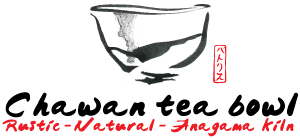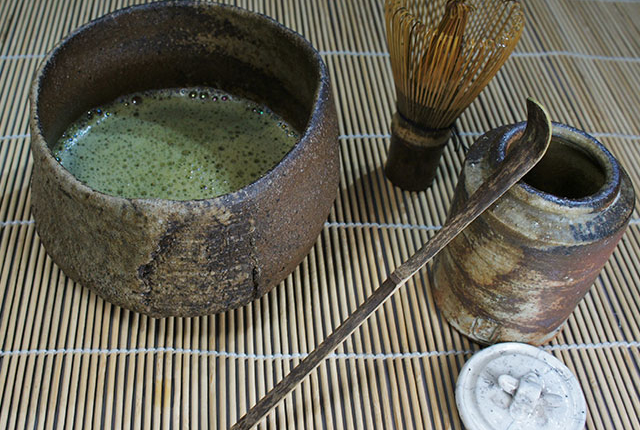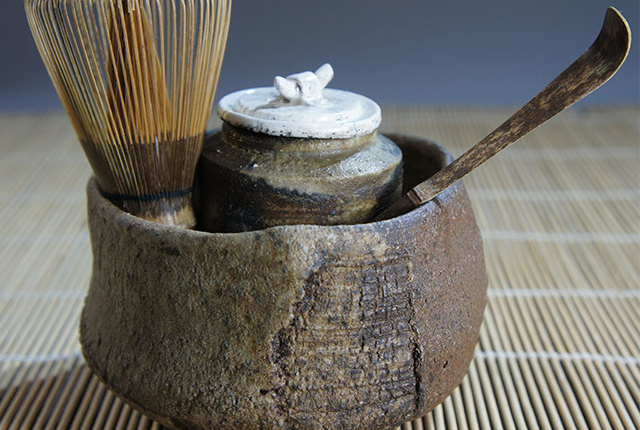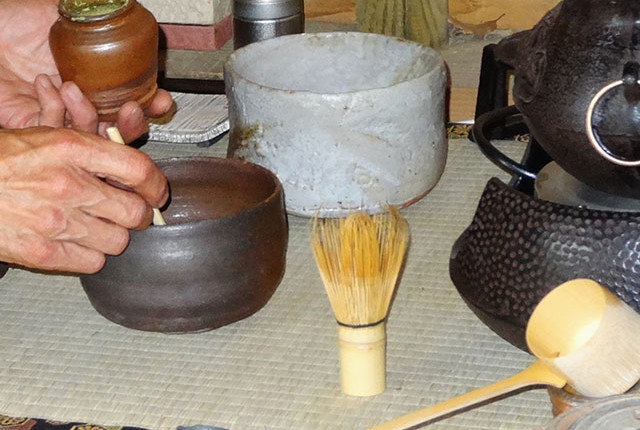Cha-no-yu (Japanese tea ceremony)
According to certain historical documents, tea was first introduced to Japan in the 8th century. However, it was not until the 12th century that tea was imported from China along with the Chinese tea practice philosophy.
Towards the end of the 15th century, the tea ceremony was still a pastime for the elite. Murata Jukō developed another ritual, based more on Japanese sensibilities and nourished by the esprit of Zen Buddhism, which was later named wabi-cha. During the Momoyama period, in the second half of the 16th century, Sen no Rikyū elevated the principles of the cha-no-yu (literally “hot water for tea”) practice to its highest level. This form of the ceremony is still practiced today.
Sen no Rikyū advocated for a rustic tea pavilion covered with a grass roof, the Jō-an, which later became the chashitsu, as well as an access garden or roji.
Unlike his predecessors who used refined Chinese and Korean ceramics, he used rustic Japanese ceramic objects and was the driving force behind the creation of chawan Raku tea bowls by Chōjirō, a local potter.
For the tea ceremony practice, Sen no Rikyū also used chawan and other stoneware objects that were fired in the large traditional tunnel-shaped anagama wood kilns. These ceramics are highly prized for their rustic and natural appearance.
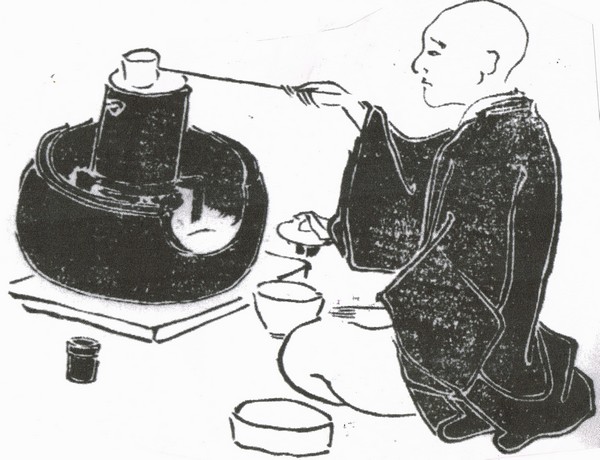 In parallel, he refined this ceremony, which glorifies frugality and parsimony. He practiced the ceremony in a confined but almost sacred space, where the reunion unfolds according to four principles:
In parallel, he refined this ceremony, which glorifies frugality and parsimony. He practiced the ceremony in a confined but almost sacred space, where the reunion unfolds according to four principles:
– WA (harmony and kindness)
– KEI (respect and humility)
– SEI (purity)
– JAKU (tranquility and serenity).
The chanoyu has played an important role in the artistic life of the Japanese people. It is an aesthetic search that also involves opening up the spirit to everything that accompanies the tea ceremony: crossing the cha-niwa (tea garden), contemplating the room where the ceremony takes place, and the tokonoma (scroll alcove) where we find a kakemono (a vertically displayed scroll with painted images appropriate to the season or a particular event), as well as an ikebana bouquet (chabana) or a bonsai. All of these aspects contribute to the creation of a distinctive and serene atmosphere. The practice of this tea ceremony has become a spiritual path: the sadō or chadō (“the way of tea”).
Search a product
Last products
-
 Cha-ire N°Chir14
€100.00
Cha-ire N°Chir14
€100.00
-
 Cha-ire N°Chir09
€90.00
Cha-ire N°Chir09
€90.00
-
 Cha-ire N°Chir06
€55.00
Cha-ire N°Chir06
€55.00
-
 Cha-ire N°Chir05
€55.00
Cha-ire N°Chir05
€55.00
-
 Cha-ire N°Chir03
€70.00
Cha-ire N°Chir03
€70.00
Contact us
Feel free to contact us for any question: Contact page
Patrice Bongrand
Rua principal 124
Mosqueiros 2460-203
Alfeizérâo – PORTUGAL
Tél: 00 (351) 262 990 468
Tél: 00 (351) 964 244 110
